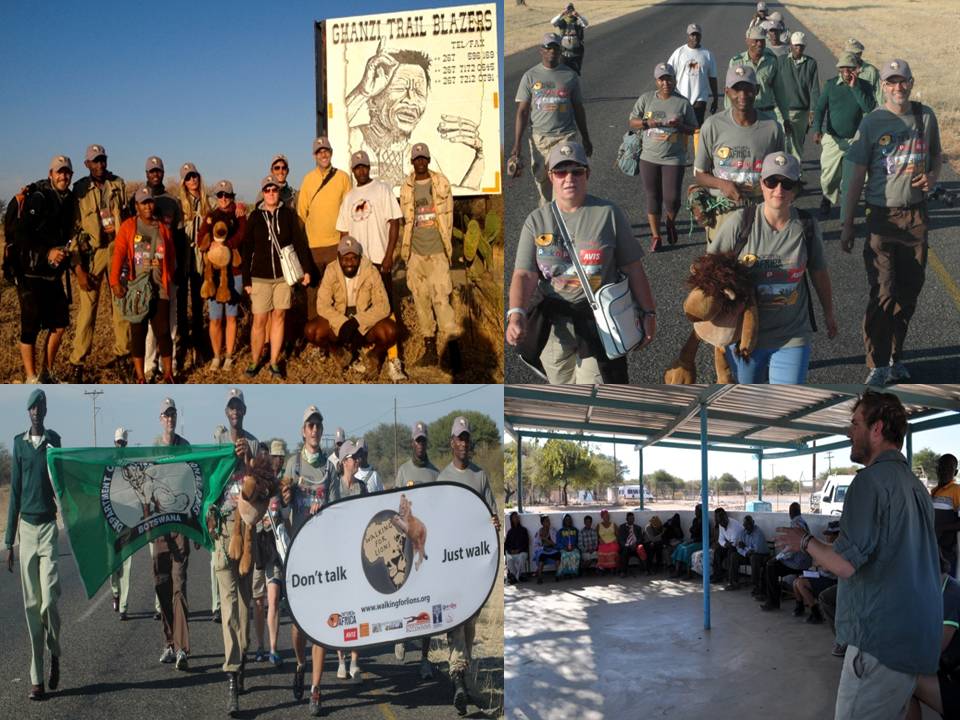Botswana is not new to wildlife conservation as it is one of the few countries that have been hailed in this mission across the world. Cheetah Conservation Botswana (CCB) in May this year joined a South African based not-for-profit organization, Walking for Lions (WFL) in their mission to support and raise awareness for lion and predator conservation. WFL founder, Marnus Roodbol together with a group of 4 brave volunteers tackled the challenge and walked from Windhoek to Ghanzi to raise funds and awareness for the plight of the lions. The 535km journey from Windhoek started on May 4 2013 and ended on the 20th May 2013 to a welcoming party in Ghanzi, an average walking distance of 30km each day. WFL approached CCB for their support as they shared similar goals to host them at their Ghanzi based camp and accompany them on their proposed activities. As a result, CCB joined forces with Walking for Lions, inviting them into the Ghanzi District in the hope that they could bring with them insights into how farmers can learn to live with the lions of Botswana without threat of livestock loss or physical harm.
The WFL team as they approached Ghanzi, they were joined by CCB staff members, Botswana’s Department of Wildlife and National Parks, Ghanzi Police and farmers from the district. The meeting place was the Kalahari Arms Hotel gardens. The welcoming remarks were done by Ghanzi Chief, Mr. Botshelo Lekgothu on behalf of the Ghanzi community. WFL leader, Mr. Marnus Roodbol added a few words and presented the Chief with t-shirts and caps as a token of appreciation. Mr. Leshope from Ghanzi DWNP, PAC office gave his overview on this campaign’s effort and elaborated his offices’ support for such initiatives while Ms. Jane Horgan from CCB gave a vote of thanks on behalf of the CCB team. This paved way for networking, forming relations and for the Botswana Daily News team to have their chance at interviewing Mr. Roodbol.
The WFL team spent some time in the area visiting prime lion habitat in the Central Kalahari Game Reserve on the 20th – 22nd, hosting a community meeting with the farmers of D’kar on the 23rd and conducting educational school talks at Ghanzi’s Itekeng Junior School on the 24th. They shared ideas about lion conservation, spreading the word about why lion preservation is important for the economy and for the environment and discussing ideas about how coexistence between farmers and large predators can be achieved. CCB and WFL both maintain a strong belief that the key to helping solve human-carnivore conflict is to find solutions that benefit both the wildlife and communities. Clips of the walk were posted daily on social media networks such as facebook, twitter and you tube. Sustainable, practical, affordable solutions to human-wildlife conflict that benefit communities and preserve threatened species are the key to the success of Botswana’s tourism sector, agriculture and the health of its environment. Organizations working towards this goal have to work together with community members to assure the survival of these species for future generations.


 RSS Feed
RSS Feed
